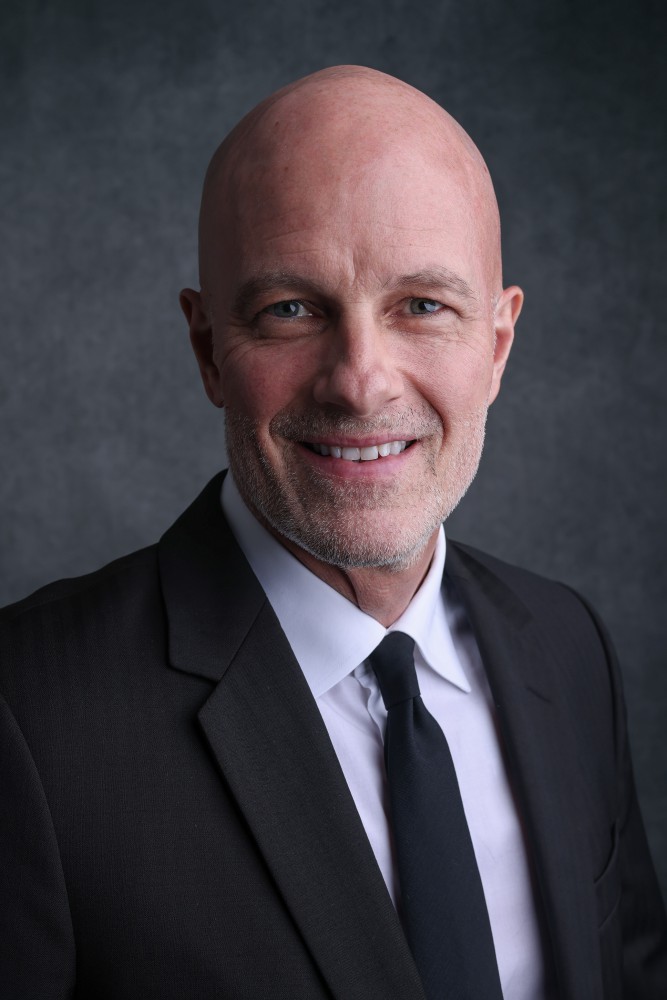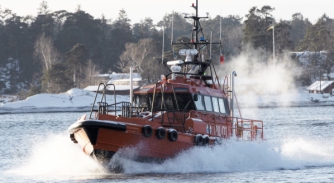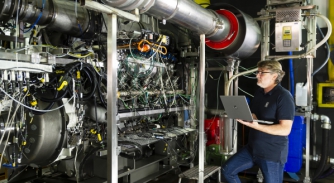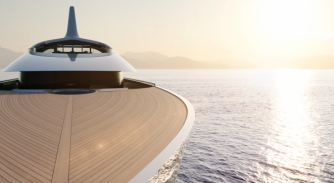Monitoring the methanol method
Chris Chatterton, COO of the Methanol Institute, offers an outside perspective on a growing energy market for new-build yachts…
In the race towards a decarbonised future, the superyacht industry is likely to follow in the footsteps of the wider marine sector, which in turn is subject to the movements of the energy industry. Of all of the energy carriers suitable for superyachts, methanol appears to be the most likely solution to support the larger end of the fleet in moving to low- and ultimately net-zero carbon operations.
Various high-profile yachting projects have opted for methanol as their future fuel of choice, both in conventional combustion engines and also with the eventual adoption of hydrogen fuel-cell technologies in mind.
 Chris Chatterton, Methanol Institute COO
Chris Chatterton, Methanol Institute COO
The Methanol Institute (MI), founded in 1989, serves as the global trade association researching and advocating the use of methanol as an energy carrier for the future. Over the past 20 years, COO Chris Chatterton has worked at an executive level across the power, oil and gas, biofuel and chemical sectors. Having joined the MI in 2015, Chatterton has charted the rise in methanol’s prominence across all sectors and has assessed the outlook for the wider marine sector and where the superyacht industry may follow.
The supply of renewable, as well as carbon-neutral and lower-carbon, methanol has grown exponentially over the past five years, from small pilot projects to almost three million metric tonnes per annum of production forecast by 2024. This growth is creating a fascinating and encouraging market for green hydrogen molecules.
“Having methanol at ambient temperature solves a lot of technical hurdles in a marine environment and provides hydrogen alongside whatever application that is required,” says Chatterton. “In the case of a superyacht, the relative ease of transport, transfer and bunkering are significant advantages. The technologies that support it have come a long way over the past 20 or 30 years.”
Although, as Chatterton points out, “all alternative energy carriers have their Achilles heel”, methanol has advantages over other fuels, such as being easier to handle and more widely available than ammonia, for example. Methanol is also easier to bunker, with a variety of supply options and established best practices either in development or already in place.
“On an energy-equivalent basis, methanol has been competitive with marine gas oil for the past five years,” explains Chatterton. “Methanol also provides shipowners with flexibility in introducing a low-pollution, lower-carbon fuel that is the closest to a drop-in available in the market.”
The elephant in the chemistry lab remains its lack of availability. However, as Chatterton highlights, inroads are being made at a rapid pace across the wider commercial marine industry. He says, “Several bunkering enterprises are already examining their methanol services with systems that are about the closest thing possible to yacht bunkering, here in Singapore as well as Rotterdam being two examples.
“There are currently two 4,000 dead-weight methanol bunkering vessels launching this year, with the additional expectation that several other major suppliers will be launching larger methanol bunkering vessels in 2025. There is a clear plan in place now for stepping away from fossil fuels, and at the same time companies like Maersk are formulating joint bunkering guidelines.”
While running a methanol-powered superyacht between Rotterdam and Singapore would be a great way to test a vessel’s ocean-going credentials, it’s unlikely to win many charters. Overland transport options are many; the often-repeated conundrum for the superyacht sector is to what extent these major suppliers would extend the network to fit the needs of the comparatively tiny superyacht market.
Conversely, how many owners will take the risk of investing hundreds of millions on a yacht that may be hamstrung in its area of operations for at least a decade?
“That’s the million-dollar question. Or in your case, probably the $2 billion-plus question,” says Chatterton. “When you start funnelling that question into the analysis, it comes down to how much visibility the owner of a vessel has over the production of a green hydrogen molecule in the field. Who’s going to produce it, and where, and then, crucially, at what price will they hold it?”
Viewing this as an issue of supply and demand driving infrastructure development is overly simplistic. The infrastructure network, or lack thereof, is relatively easy to conceptualise. There are more nuanced forces at play, however, both in terms of prospective availability and the green credentials of methanol as an energy carrier.
Methanol is the simplest alcohol molecule and is liquid at room temperature. The majority of methanol today is produced from natural gas but when used as fuel, it has lower carbon emissions, produces no sulphur emissions and has very low particulate matter and nitrous-oxide emissions. Its ease of transport and storage, in comparison to other hydrogen carriers, gives it broad appeal across all sectors seeking to decarbonise. This utility, both as a fuel and petrochemical building block, creates a complex market for these molecules across all energy-intensive industries – a market that the superyacht and marine industry may not fully understand.
Chatterton stresses that as the supply of renewable methanol expands, the well-to-wake (WTW) accounting method for methanol as a fuel will become a key determinant in its theoretical development as the dominant future fuel in the marine sector. WTW integrates the entire process of fuel production, delivery and use on board ships, and all emissions produced therein, and while significant gains have been made, important questions remain regarding the global capacity for carbon-neutral or carbon-negative methanol production.
Chatterton highlights the ‘Fit for 55’ package as the EU regulatory framework that is likely to have the broadest impact on the development of the methanol supply network in Europe. This package, presented in July and December 2021, is designed to realise the European Climate Law objectives: climate neutrality by 2050 and a 55 per cent reduction of net greenhouse gas (GHG) emissions by 2030 compared with 1990 levels.
“The European regulations around the production of renewable fuels are quite strict, almost to the point where it could actually backfire. If it becomes difficult and expensive to produce, we will see the potential fuel producers going outside the EU,” adds Chatterton.
The energy transition is also the transition away from a relatively stable market for heavy fuel oil (HFO) and cleaner, but still polluting marine diesel, to a dynamic and more technologically complex set of energy sources that are highly sought after by a range of end users and produced from a wide range of sources.
Chatterton explains, “We now have maritime fuel-supply specialists that are very used to dealing with a product [HFO] that had very little value outside its utility as a marine fuel, save for, say, asphalt or similar. Now they are interacting with a market where these new energies are highly sought after across all industries, and the markets are significantly more complicated.”
The Methanol Institute has played a crucial role in the research and implementation of methanol projects worldwide. It has actively engaged across the marine spectrum, as well as the superyacht sector. While many paths are being taken towards a low and net-zero carbon future, parts of the superyacht industry will need to lean on global trade organisations such as MI to effectively transition to this
future fuel.
NEW: Sign up for SuperyachtNewsweek!
Get the latest weekly news, in-depth reports, intelligence, and strategic insights, delivered directly from The Superyacht Group's editors and market analysts.
Stay at the forefront of the superyacht industry with SuperyachtNewsweek
Click here to become part of The Superyacht Group community, and join us in our mission to make this industry accessible to all, and prosperous for the long-term. We are offering access to the superyacht industry’s most comprehensive and longstanding archive of business-critical information, as well as a comprehensive, real-time superyacht fleet database, for just £10 per month, because we are One Industry with One Mission. Sign up here.
Related news

Joint investment in methanol conversion kit
Designed initially for use on diesel engines up to 1000kw, it shows scalability and promise for fossil-free solutions in the marine industry
Technology

Rolls-Royce successfully tests mtu engines with pure hydrogen
Rolls-Royce has successfully tested a 12-cylinder gas variant of the MTU Series 4000 L64 running on 100% hydrogen
Business

ETNZ sets land speed record
Emirates Team New Zealand records 222.4km/h with 22 knots of windspeed on Lake Gairdner in South Australia
Technology

DNV Hydrogen Report 2022
Highlights and insights from the comprehensive new report focussed on Hydrogen's scalability towards 2050
Technology

Feadship’s road map to ZERO
The Dutch Shipyard reveals it is one stage closer to achieving carbon neutrality with concept Pure by 2030
Technology
Related news
Joint investment in methanol conversion kit
2 years ago
ETNZ sets land speed record
2 years ago
DNV Hydrogen Report 2022
2 years ago
Feadship’s road map to ZERO
2 years ago
NEW: Sign up for
SuperyachtNewsweek!
Get the latest weekly news, in-depth reports, intelligence, and strategic insights, delivered directly from The Superyacht Group's editors and market analysts.
Stay at the forefront of the superyacht industry with SuperyachtNewsweek



